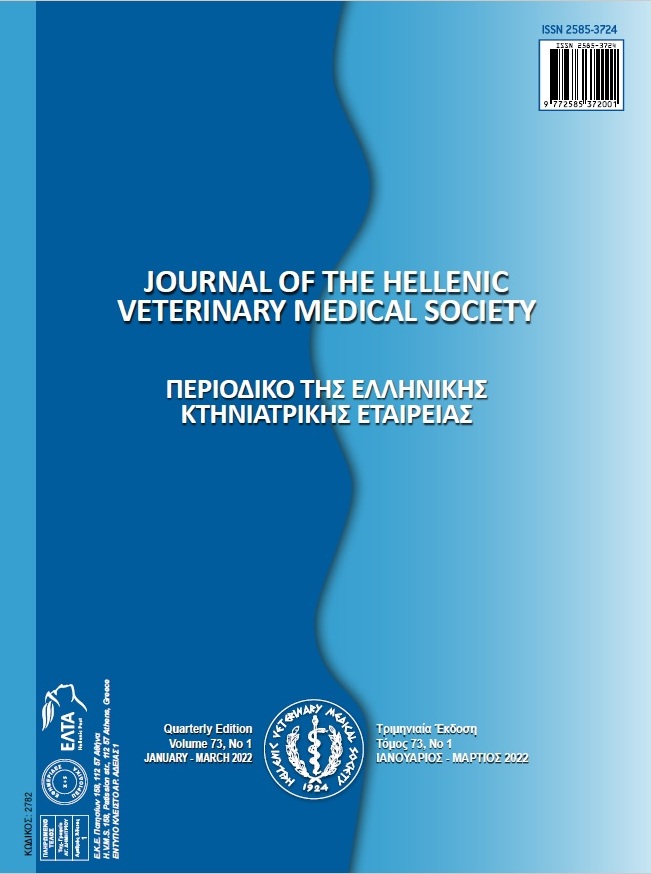The influence of the homofermentative lactic acid bacteria and enzymes on the nutritional value, health safety, and aerobic deterioration of the different maize hybrid silages
Resumen
The research aimed to determine the impact of identic inoculants of lactic acid bacteria (LAB) with enzymes (ENZ) on the silage quality of 5 different corn hybrids (Zea mays). Hybrids (Pioneer Hi-Bred DuPont) differed by FAO maturity group (from early H1, mid-early H2, medium H3, mid-late H4 to late H5). Inoculant LAB consisted of a mixture of homofermentative bacteria: Lactobacillus plantarum, Enterococcus faecium, Pediococcus acidilactici, Lactobacillus salivarius, and ENZ: cellulase, α- amylase, hemicellulase, xylanase. Ensiling was done at the laboratory conditions, where the green mass of corn hybrids has been inoculated with LAB and ENZ were added, before ensiling. The process of ensiling lasted 60 days. The addition of LAB inoculants with ENZ is frequently used to speed up the ensiling process, prevent the growth of harmful microorganisms, protect the aerobic stability of silage, and improve the silage quality of different crops. The phase of aerobic degradation of silage begins immediately after exposure to silage to air. This stage is inevitable during feeding with silage and takes place in all silages, regardless of quality.
The same pattern of reaction on identic LAB and EFEs addition was not found in silages ensiled from different hybrids. Among the evaluated corn hybrids, the additive to H1 early maturity hybrid had significantly improved the silage quality, and prolonged the time of aerobic stability, mainly due to the significantly highest CP, lowest ADL, and highest LA content. The chemical composition, fermentation, and microbiology profiles of silage significantly influence CO2 production in a test of aerobic stability (AS), and this is a causal relationship of aerobic stability duration. The results of this trial showed that the lower butyric acid, total microorganisms number, count of yeasts and mold, pH, and higher LAB, lactic acid, and acetic acid levels (P<0.05), are accompanied by the production of lower CO2 (P<0.05). The current research and previous studies suggest that nutritional value, health safety, and aerobic deterioration of the different maize hybrid silages are under the influence of epiphytic microflora of ensiled plants, used LAB inoculum, and EFEs addition in the appropriate amount, and the type of hybrid ensiled as well.
Article Details
- Cómo citar
-
Ivetić, A., Stojanović, B., Puvača, N., Radulović, S., Ćosić, M., Bajagić, M., & Petrujkić, B. (2024). The influence of the homofermentative lactic acid bacteria and enzymes on the nutritional value, health safety, and aerobic deterioration of the different maize hybrid silages. Journal of the Hellenic Veterinary Medical Society, 75(3), 7871–7886. https://doi.org/10.12681/jhvms.35678
- Número
- Vol. 75 Núm. 3 (2024)
- Sección
- Research Articles

Esta obra está bajo una licencia internacional Creative Commons Atribución-NoComercial 4.0.
Authors who publish with this journal agree to the following terms:
· Authors retain copyright and grant the journal right of first publication with the work simultaneously licensed under a Creative Commons Attribution Non-Commercial License that allows others to share the work with an acknowledgement of the work's authorship and initial publication in this journal.
· Authors are able to enter into separate, additional contractual arrangements for the non-exclusive distribution of the journal's published version of the work (e.g. post it to an institutional repository or publish it in a book), with an acknowledgement of its initial publication in this journal.
· Authors are permitted and encouraged to post their work online (preferably in institutional repositories or on their website) prior to and during the submission process, as it can lead to productive exchanges, as well as earlier and greater citation of published work.




